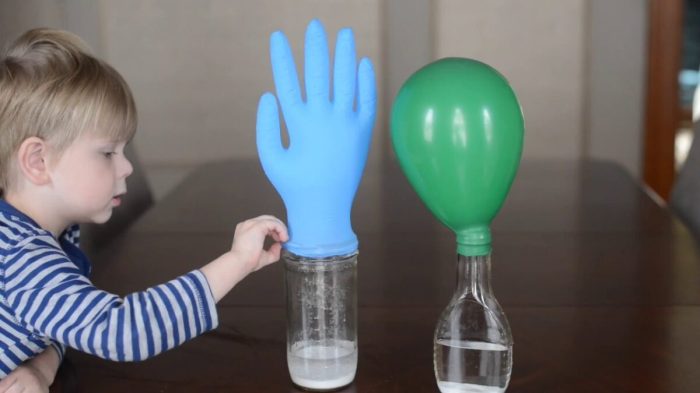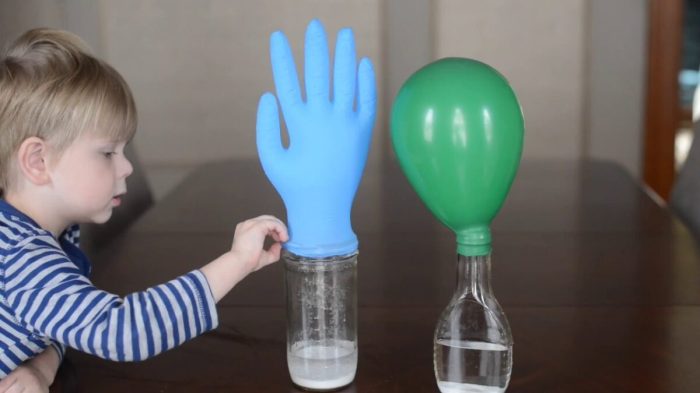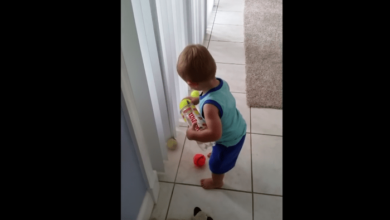
10 Minute Parenting Experiments: Small Changes, Big Impact
The 10 Minute Parenting Experiment: It sounds too simple, right? But this approach to parenting, based on short bursts of focused effort, could be the key to unlocking positive change in your family dynamic. Forget the idea of massive overhauls and complicated strategies.
This method is all about small, manageable steps that can lead to big, lasting improvements in your relationship with your child.
Imagine tackling bedtime battles with a 10-minute experiment, or using a quick, focused approach to encourage positive behavior during mealtimes. The possibilities are endless, and the beauty lies in the simplicity of the concept. By focusing on a specific area for just 10 minutes, you can gain valuable insights into what works best for your child, creating a more harmonious and joyful family life.
The Concept of 10-Minute Parenting Experiments
Imagine a world where parenting challenges are met with a spirit of experimentation and discovery rather than overwhelm and frustration. This is the essence of 10-minute parenting experiments – a simple yet powerful approach that empowers parents to try new strategies, observe their impact, and adapt their parenting style for the better.
Benefits of 10-Minute Parenting Experiments
-minute parenting experiments offer a multitude of benefits for both parents and children. They provide a structured framework for exploring different parenting techniques, fostering a sense of agency and control over parenting decisions. By focusing on short, manageable experiments, parents can avoid feeling overwhelmed and discouraged, making the process more approachable and sustainable.
Types of 10-Minute Parenting Experiments
The beauty of 10-minute parenting experiments lies in their versatility. They can be tailored to address a wide range of parenting challenges, from fostering positive behavior to improving communication and managing difficult emotions. Here are a few examples:
Positive Reinforcement Experiments
Positive reinforcement is a powerful tool for encouraging desired behaviors. A 10-minute experiment might involve implementing a simple reward system for a specific behavior, such as praising a child for completing their homework or offering a sticker for helping with chores.
Example:For a child struggling with bedtime, a 10-minute experiment could involve offering a special story or a few minutes of extra playtime for going to bed on time.
Time-Out Experiments
Time-outs can be an effective strategy for managing challenging behavior. A 10-minute experiment could involve setting a clear time-out procedure, such as having the child sit in a designated area for a specific duration.
The 10-minute parenting experiment is all about finding quick wins in the chaos. One of my favorite tricks is to turn a simple task, like getting ready in the morning, into a fun activity. For example, I let my son choose his hairstyle for the day, and he loves browsing through pictures of cute little boys hairstyles.
It’s a small thing, but it makes a big difference in his mood, and it’s definitely a win for both of us in the 10-minute parenting experiment.
Example:For a child who throws tantrums when frustrated, a 10-minute experiment could involve having them sit quietly for a few minutes after a tantrum, then calmly discussing the situation.
Communication Experiments
Effective communication is crucial for building strong parent-child relationships. A 10-minute experiment could involve practicing active listening, using “I” statements, or engaging in a structured conversation about a specific topic.
Example:For a child who is struggling with schoolwork, a 10-minute experiment could involve having a structured conversation about their challenges and brainstorming solutions together.
The 10-minute parenting experiment taught me that even small bursts of focused attention can make a big difference. I was surprised how much energy I had left after those short sessions, so I started wondering if a similar approach could work for fitness.
That’s when I stumbled across a review about is obe fitness worth it and decided to give it a try. I’m now incorporating 10-minute fitness sessions into my routine, and it’s amazing how much I can accomplish in such a short amount of time.
Practical Examples of 10-Minute Experiments
These short, focused experiments can help you pinpoint specific areas for improvement and test out different strategies. The key is to focus on one small aspect of your parenting at a time, making it easier to observe results and adapt your approach.
Improving Bedtime Routines, 10 minute parenting experiment
This experiment aims to improve bedtime routines by incorporating a calming activity to signal the transition to sleep.
- Choose a calming activity: This could be reading a story, singing a lullaby, or a gentle massage. Select an activity that your child enjoys and helps them relax.
- Set a timer for 10 minutes: This will help you stay focused and ensure you don’t overextend the activity.
- Observe your child’s response: Pay attention to how your child reacts to the calming activity. Do they seem relaxed and ready for sleep? Are they engaged and enjoying the activity?
- Reflect and adjust: After the 10 minutes, take a moment to reflect on how the experiment went. Did the calming activity help your child wind down? If not, consider trying a different activity or adjusting the timing.
Encouraging Positive Behavior During Mealtimes
This experiment aims to improve mealtime behavior by using positive reinforcement.
- Identify a desired behavior: Choose a specific behavior you want to encourage, such as sitting at the table, using utensils, or trying new foods.
- Prepare a reward: Select a small, meaningful reward for your child, such as a sticker, extra playtime, or a small treat.
- Set a timer for 10 minutes: Focus on the chosen behavior during this time frame.
- Provide positive reinforcement: Every time your child exhibits the desired behavior, acknowledge it with praise and give them the reward. Be specific and enthusiastic in your praise.
- Observe and adjust: After the 10 minutes, reflect on the experiment. Did your child show an improvement in the desired behavior? If not, consider adjusting the reward or the behavior you’re focusing on.
Enhancing Communication Skills
This experiment focuses on active listening and responding to improve communication between parents and children.
- Choose a specific topic: This could be a recent event, a shared interest, or a problem your child is facing.
- Set a timer for 10 minutes: This will help you stay focused and ensure you give your child your full attention.
- Practice active listening: Focus on what your child is saying, making eye contact, and asking clarifying questions. Avoid interrupting or offering unsolicited advice.
- Respond with empathy and understanding: Acknowledge your child’s feelings and perspectives, even if you don’t agree with them. Show that you understand their point of view.
- Reflect and adjust: After the 10 minutes, discuss how the conversation went. Did you feel heard and understood? Did your child feel listened to? Adjust your approach based on the feedback.
Considerations for Successful Experiments: 10 Minute Parenting Experiment

Ten-minute parenting experiments can be a powerful tool for positive change, but their success depends on careful planning and execution. To maximize the benefits of these experiments, it’s crucial to consider several key factors.
The 10-minute parenting experiment is all about finding small moments to connect with your kids. It’s amazing how a quick conversation about their day can make a difference. And when it comes to teenagers, who are often navigating the confusing world of acne and breakouts, a little guidance on skin care can go a long way.
Check out these teen skin care tips for some helpful advice. Even a simple conversation about skincare can open up a door for deeper connection, making your 10-minute parenting experiment even more rewarding.
Setting Clear Goals and Expectations
Defining clear goals and expectations is fundamental to the success of any experiment. Before embarking on a 10-minute parenting experiment, it’s essential to identify the specific behavior you want to change or the skill you want to develop. For example, if you’re aiming to improve communication with your child, a clear goal could be to increase the number of meaningful conversations you have during a specific timeframe.
It’s also important to consider realistic expectations. A 10-minute experiment is unlikely to completely transform a behavior overnight, but it can lay the foundation for lasting change.
Challenges and Limitations of 10-Minute Experiments

While 10-minute parenting experiments offer a convenient way to test new approaches, they also come with certain challenges and limitations. It’s important to be aware of these aspects to ensure the effectiveness and practicality of these experiments.
Challenges in Implementation
Implementing 10-minute parenting experiments can be challenging for several reasons. Parents might find it difficult to consistently dedicate 10 minutes to a specific parenting strategy, especially with busy schedules. The short duration may not provide sufficient time to observe significant changes in a child’s behavior, potentially leading to frustration or a feeling of ineffectiveness.
Additionally, the limited timeframe might not allow for thorough exploration of the chosen parenting approach, resulting in incomplete understanding and potentially inaccurate conclusions.
Comparison with Longer-Term Strategies
While 10-minute experiments can be helpful for exploring new parenting techniques, they are not a replacement for long-term parenting strategies. Longer-term approaches involve consistent application of principles and techniques over time, allowing for deeper understanding and more lasting changes in behavior.
For instance, consistent use of positive reinforcement over weeks or months can significantly influence a child’s behavior compared to a single 10-minute experiment.
Limitations of Short-Term Experiments
Relying solely on short-term experiments can have limitations. The brief duration might not capture the full impact of a parenting strategy, as changes in behavior often take time to manifest. Additionally, short-term experiments might not account for individual differences in children’s personalities, temperaments, and developmental stages.
For example, a 10-minute experiment on encouraging independent play might not be effective for a child who thrives on social interaction, highlighting the need for personalized parenting strategies.
Connecting with Other Parenting Approaches

-minute parenting experiments are not meant to replace existing parenting styles. Instead, they can be seen as a valuable tool to enhance and personalize your parenting journey. By incorporating these experiments into your chosen approach, you can gain insights, refine your techniques, and foster a deeper connection with your child.
Positive Discipline
Positive discipline emphasizes building positive relationships, setting clear limits, and providing opportunities for children to learn from their mistakes. 10-minute experiments can be a powerful tool for implementing positive discipline strategies. For example, you can conduct an experiment focused on “active listening” to understand your child’s perspective better.
This can help you respond to their needs more effectively and build a stronger connection.
Attachment Parenting
Attachment parenting emphasizes nurturing a secure bond between parent and child. 10-minute experiments can complement attachment parenting by fostering opportunities for closeness and connection. For example, you can experiment with “skin-to-skin contact” for a few minutes each day. This can help your child feel safe and secure, strengthening the bond between you.
Other Parenting Styles
-minute experiments can be adapted to various parenting styles, including:
- Authoritative Parenting: Conduct experiments that focus on setting clear expectations and providing consistent consequences.
- Authoritarian Parenting: Experiment with different methods of discipline to find what works best for your family.
- Permissive Parenting: Use experiments to explore setting boundaries and establishing routines.
Resources for Exploring Different Parenting Styles
There are many resources available to help parents learn about different parenting styles and find what works best for their families. Some valuable resources include:
- Books: “Positive Discipline” by Jane Nelsen, “The Whole-Brain Child” by Daniel J. Siegel and Tina Payne Bryson, “The Attachment Parenting Book” by Dr. William Sears and Martha Sears.
- Websites: Positive Discipline Association, Attachment Parenting International, Zero to Three.
- Parenting Groups: Connect with other parents in your community to share experiences and learn from each other.






